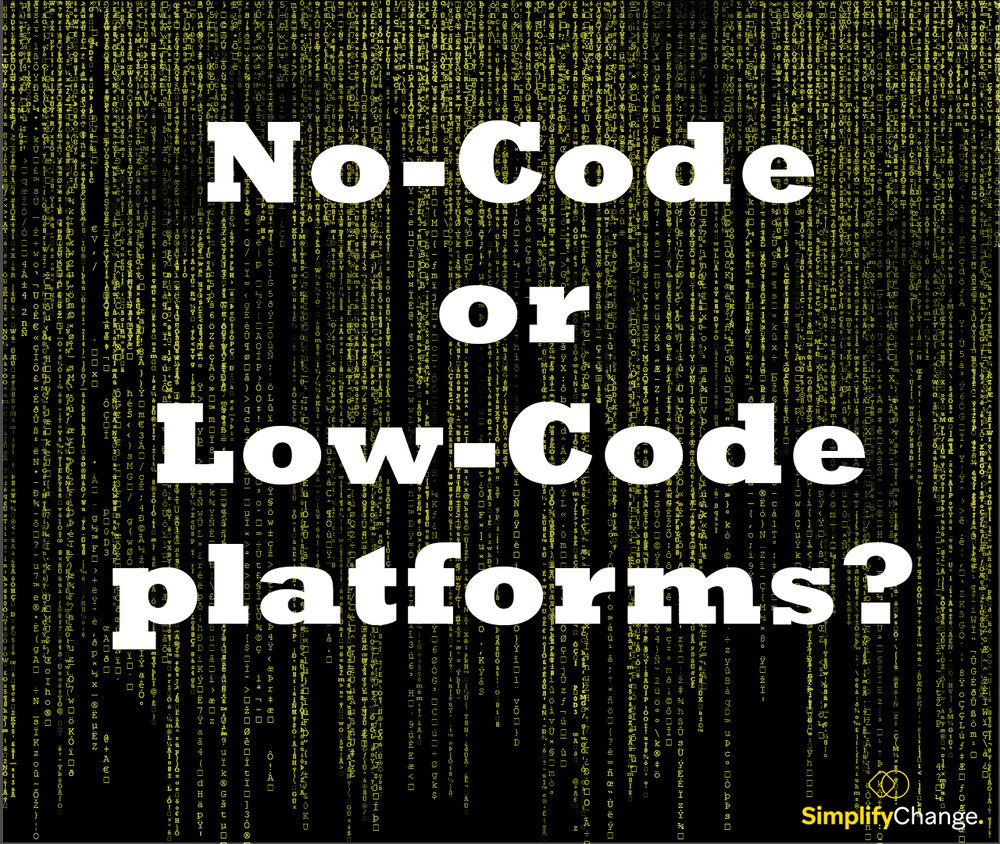No-Code or Low-Code platforms. What are they and what's in it for you?
In your company, is it easy to go from idea to working product quickly?
Are you one of those people who loves sketching out an idea on a piece of paper, and seeing it created but you are continually frustrated by processes, budget requirements, and business cases?
Are you interested in seeing your idea come to life, but don’t know how to make it happen?
No-Code or Low-Code platforms could be the answer for you.
What are they?
A No-Code platform is simply a way to create a website or application without needed years or decades of programming experience. Using visual drag and drop elements, coupled with configuration, they allow you to create solutions with ease.
Think of them as Excel VBA for application creation, or Scratch for businesses.
A Low-Code platform is even better, as it removes some of the limitations of No-Code platforms, allowing you to use code when needed to enhance your application.
Here are some use cases:
You want to optimise a business process, capturing some information, manipulating it, getting it signed off, and then analysing the resulting product.Fire up a No-Code platform, drag and drop components, hook them together, and Bob’s your Uncle. Done.
You’ve convinced your boss that your idea is a good one, but he wants further justification for allocating budget to it.Simple. Show it to him. A picture is worth a thousand words!
You need investors to buy into your start-up, but lack the funds to create a fully working Version 1. Creating an MVP would be what they’re after.Use a No-Code platform to create it yourself, then add a link to your pitch deck, and let investors and early adopters go wild!
You want a small application developed which will help your team, but the Budget/PMO/Politics won’t allow it to be created. (or you just can’t muster the energy to jump through the right hoops).What are Friday afternoons for? Clearly not long lunches at the pub, so roll up your sleeves and make it happen. You can almost certainly make something useful in that time with a No-Code platform.
You want to dip your toes into coding, or want to show your kids how cool and how ‘with it’ you are.Open up your selected No-Code platform and make a game.
What are their limitations?
No-Code means you’re restricted by the conventions and capabilities of the application you’re using. You can’t extend it as you like.
Low-Code is less restrictive however you still need to abide by integration points, and can’t be completely unconventional with what you want.
Don’t try and create Fortnite for example, or your favourite ERP package. Those are more complicated, but you’ll be very surprised by how few limitations there are.
When should I NOT use them?
3D-environments, Complex calculation engines, Big Data processing/analysis, AI/machine learning components.
For most of these, I would create the UI elements in a Low-Code platform and call the underlying specialist component as needed to do the grunt work. Giving you the best of both worlds.
What are some No-Code platforms?
What are some Low-Code platforms?
Here are links to some examples of what is possible on these platforms:
Those are all well and good, but do people do this for real?
Yes! Bubble.io has had over 750,000 people creating applications with it.
Airtable is used by 200,000 organisations across the world.
How should I get started? What is my Hello World application?
What is your biggest pain point right now? Do you have a solution?
That sounds like a good candidate for me. Something you’re passionate about fixing!
Have you used them?
Yes! I’ve coded for roughly 2 decades and consider myself an expert on a few different programming languages and I’ve created dozens of applications of all types.
That being said, No-Code and Low-Code platforms are streets ahead in terms of efficiency, time-saving and quick turnaround for the right sort of application.
I recommend becoming familiar with them.
Can we see what you’ve done?
Watch this space. Hopefully soon!
Meanwhile, if you have any questions, I’m happy to answer them. Go for it!
Contact me on LinkedIn or on our Simplify Change website if you’d like to know more.




